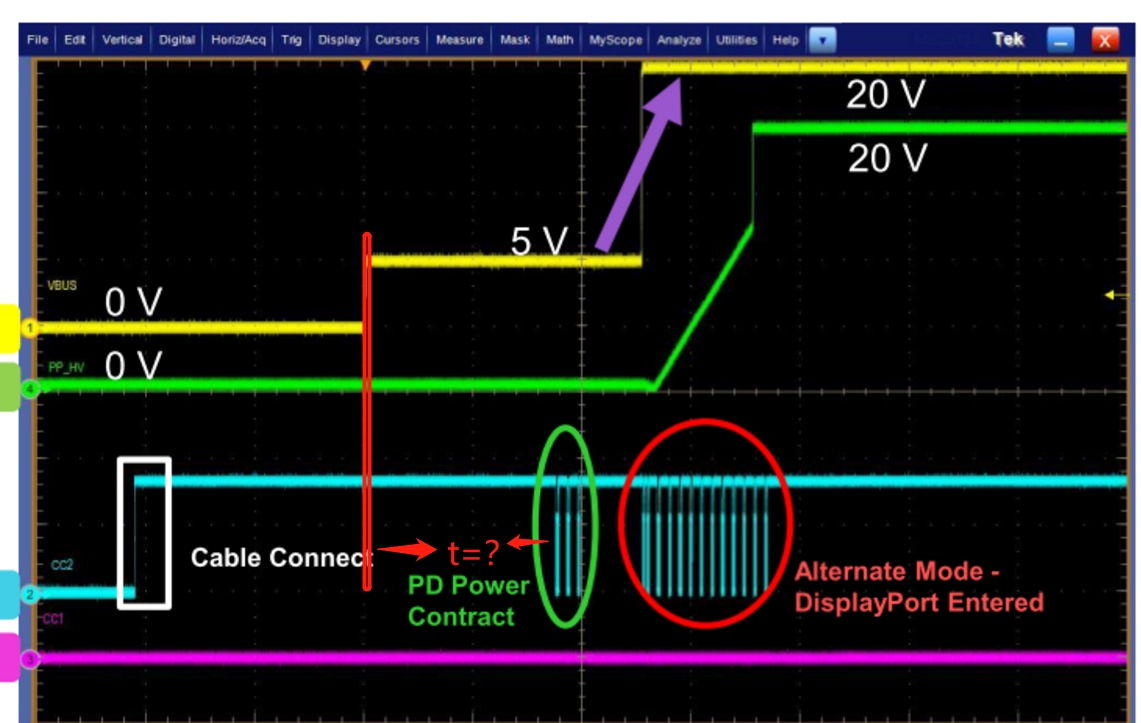Other Parts Discussed in Thread: TPS65987
Hi Sir,
Our customer used the TPS65987 for PC Host application,
But have some question need you help to Clarify,
Q1, If PP_CABLE & VIN_3V3 no power, then VBUS have power from PP_HV1?
Q2. Can we use TPS6598x configuration tool to setting the GPIO12 output TPS65987(Host)=High & TPS65987(Device)=Low?
Q2-1, Insert the Adapter, which one of the GPIO12 and PP_HV operates first?
Q2-2, If TPS65987 is setting Device, which one of the GPIO12 and PP_HV operates first?
Q3, In the idle state, PP_CABLE=5V, PP_HV=5V, VIN_3V3=3.3V, Does the VBUS pin of TPS65987 have output?
Q4, We are reference TPS65987EVM Design for HRESET pin setting, need to pull High Signal to TPS65987? Does the current practice have an impact on chip stability?
Q5, If Adapter is 19V, Is it configured to output 19V through FW? Not adaptive through CC?
Q6, PP_CABLE and VIN_3V3 are powerless in the shutdown state.
If the TPS65987 chip works abnormally, is there any problem with the shutdown charging?
Q7, What is the T value as below?
Hugo


